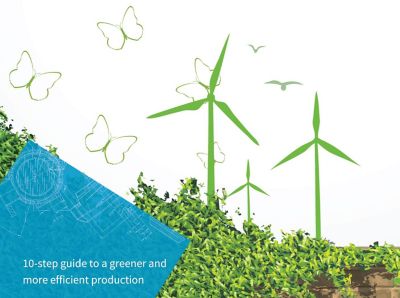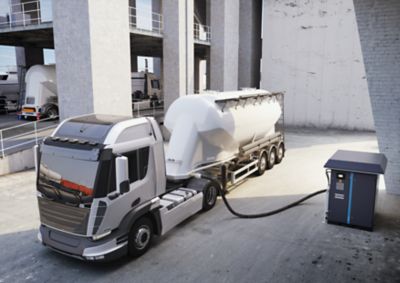How to ensure clean compressed air for your conveying process
In order to get an idea of what clean compressed air is, it is important to look at the contaminants first. Ambient air always contains contaminants, such as moisture and dust particles. Other contaminants such as oil, may be added to your process if you don’t use the right compressed air equipment. Because the compressed air comes into direct contact with the transported material, these contaminants can pose a threat to your pneumatic conveying system and your end products alike. In order to protect the reputation of your company, your process continuity, and your product quality you have to keep them out of your compressed airflow.
The first step to safeguarding your system is to get to know these contaminants and what you can do about them.
Contaminants that may threathen your compressed air
The air that surrounds us contains three main types of contaminants: dust, oil, and moisture. Depending on where you are, their concentration can be quite high – and it will increase further when the air is compressed, e.g. for your pneumatic conveying system
- Dust: A cubic meter of air can contain more than 140 million tiny dirt particles in industrial environments. Most of them are too small (less than two microns) to be removed by a regular inlet filter. If the air is untreated, these particles can harm your downstream equipment.
- Oil: There are two ways for oil to enter the compressed airflow. One, similar to moisture, is through the intake air in the form of hydrocarbons (such as those produced by burning fossil fuels).
The other source of oil in the compressed air comes from the compressor’s own lubrication system. That is why you should always use oil-free equipment when conveying food, pharmaceuticals, or any other products that have to be protected from oil contamination. - Moisture: Air always contains moisture, for example in the form of water vapor and condensate. In terms of volume, water vapor is the most prominent contaminant and it enters the compressed air system through the intake. If the moisture is allowed to remain in the compressed air, it can reduce the service life of your equipment through corrosion and increase the maintenance required.
Why is moisture such a threat to pneumatic conveying systems?
The threat of moisture is often overlooked. But when looking at the list of the products most often transported via pneumatic conveying, it is easy to see why moisture can be such a problem. Many of them are foods, such as flour, sugar, and grains – and we all know what happens to flour and sugar when they get wet. They clump easily and their quality is diminished. But that’s not even the worst case, because the bacteria in untreated air can spoil these food products and jeopardize the health of end consumers.
Other commonly conveyed products that are susceptible to moisture include pharmaceuticals, chemicals, construction materials, minerals, and metal parts. All of these products require particularly dry, high-quality air to ensure that they are optimally protected.
A clean pneumatic conveying system
Fortunately, it is not difficult to protect your system from all of these contaminants. Just as there are various contaminants that threaten your compressed air system, there are also various pieces of equipment to ensure your compressed air is clean. Filters, dryers, cooler, water separators, and others can help remove contaminants from your compressed air.
In addition, using Class 0 certified oil-free equipment guarantees that no oil is added during the compression process. This will help you mitigate the risks of oil contamination and exclude the need for filters (that filter out oil contaminants).
Building your system using these different air treatment components can be challenging. When buying your equipment from different manufacturers, you’ll need to keep a close eye on how you can install them together and, in the end, if they are properly aligned to work together.
Going for a single-source provider can ensure that all equipment is perfectly matched to each other. This also offers great benefits when it comes to maintenance because you only need technicians from one supplier. A single-source provider can make sure that all compressor room components are sized optimally with respect to each other, that they all operate safely without being overloaded and that they can be monitored by an overall controller.

